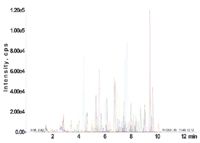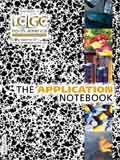Rapid Screening and Quantitation of 534 Pesticides From Food By LC–MS-MS
With more than 800 pesticides currently in use there is growing concern by government agencies about the effect of pesticide exposure on human health. While analytical techniques like GC or GC–MS have traditionally been used for pesticide analysis, LC–MS-MS has become the technique of choice due to speed, increased sensitivity, and reduced sample preparation. The following describes an LC–MS-MS method for screening of 534 pesticides in food products.
With more than 800 pesticides currently in use there is growing concern by government agencies about the effect of pesticide exposure on human health. While analytical techniques like GC or GC–MS have traditionally been used for pesticide analysis, LC–MS-MS has become the technique of choice due to speed, increased sensitivity, and reduced sample preparation. The following describes an LC–MS-MS method for screening of 534 pesticides in food products.

Figure 1: MRM ion traces for pesticides at 10 ng/mL.
Experimental Conditions
Sample preparation from vegetable, nut, and citrus plant materials was done using a standard QuEChERS cleanup procedure and chromatographic separation of the pesticides was achieved using a Phenomenex® Synergi™ Fusion-RP (polar embedded C18) HST 2.5 μm, 50 × 2 mm HPLC column. The method for the AB Sciex 3200 QTRAP® LC–MS-MS system was downloaded from the iMethod™ Applications store (www.absciex.com/iMethods) and contained all the LC methods, optimized MS settings for each analyte, processing methods, reporting templates, complete method documentation, and a Pesticide Standard Kit, iDQuant™ that contained 204 compounds distributed in 10 vials. The MS-MS library database of over 601 pesticides was also downloaded, which enabled identification of unknown peaks based on the dual MRM and MS-MS functionality of the QTRAP System.

Table I: Representative recoveries, signal-to-noise ratios and estimated detection limits for selected pesticides spiked at 25 ng/mL in a cucumber matrix
Results
534 pesticides were screened in less than 12 min. Table I provides representative recoveries, signal-to-noise ratios, and estimated detection limits for selected pesticides spiked at 25 ng/mL in a cucumber matrix. For a full list of recoveries and performance, visit www.absciex.com/iMethods. The final method was verified at different laboratory facilities to ensure the robustness of the method.
Phenomenex Inc.
411 Madrid Avenue, Torrance, CA 90501
tel. (310) 212-0555, fax (310) 328-7768
Website: www.phenomenex.com

Analytical Challenges in Measuring Migration from Food Contact Materials
November 2nd 2015Food contact materials contain low molecular weight additives and processing aids which can migrate into foods leading to trace levels of contamination. Food safety is ensured through regulations, comprising compositional controls and migration limits, which present a significant analytical challenge to the food industry to ensure compliance and demonstrate due diligence. Of the various analytical approaches, LC-MS/MS has proved to be an essential tool in monitoring migration of target compounds into foods, and more sophisticated approaches such as LC-high resolution MS (Orbitrap) are being increasingly used for untargeted analysis to monitor non-intentionally added substances. This podcast will provide an overview to this area, illustrated with various applications showing current approaches being employed.

















